Table of Contents
- Introduction
- What Is a Bill of Lading?
- Why the Bill of Lading Matters in Global Trade
- Types of Bill of Lading – What to Use, and When
- Bill of Lading Sample Format (2025 Version)
- The Bills of Lading Act 2025 – What Changed, and Why It Matters
- Paper, Electronic, or Blockchain — What Should You Use?
- Common Mistakes Exporters Make With BoLs
- Conclusion
Ask any exporter what delays a shipment, and chances are, the problem traces back to one document: the Bill of Lading. It’s not just paperwork. It’s the official proof that goods have been handed over for transport, and the key that unlocks delivery, payment, and customs approval.
For decades, Indian traders worked under a law written in 1856. That law is now gone. In its place stands the Bills of Lading Act 2025, which for the first time makes digital BoLs fully valid under Indian law. No more waiting for couriers. No more rejections from banks because a document was “not original.” What was once a bottleneck is becoming a faster, cleaner process.
This guide explains what a Bill of Lading is, how it works today, and what changes you need to know as an Indian exporter or logistics buyer in 2025.
What Is a Bill of Lading?
A Bill of Lading, often just called a BoL, is the shipping industry’s way of putting things in writing. You hand over your goods to a transporter, and in return, you get this document that says, “Yes, we’ve received it. Here’s what we’re moving. Here’s who it’s for.”
It sounds simple enough, but this one piece of paper does a lot of heavy lifting. It works as a receipt, a contract and in some cases, it’s also a key that lets the buyer claim ownership at the destination port.
If you’re exporting under a letter of credit, the bank might not release your money unless it sees the BoL. If you’ve got the wrong consignee name on it, customs might not clear the cargo. These aren’t rare problems — they’re common.
And now that India’s shipping rules have changed, the format doesn’t always have to be paper. The BoL can be digital too, as long as it follows the right process. But digital or not, if you don’t understand what’s inside this document, you’re flying blind.
Why the Bill of Lading Matters in Global Trade
If there’s one document that can delay your shipment, your payment, and your peace of mind all at once, it’s the Bill of Lading.
Let’s say you’ve just packed a container full of steel fasteners for a buyer in Oman. Everything’s ready — the invoice, the packing list, even the insurance. But unless the carrier gives you a Bill of Lading, your cargo might as well still be on land. The buyer won’t release payment. The bank won’t process the Letter of Credit (LC). And customs won’t start clearance without it.
This single document connects all the dots. It tells the port what’s being shipped, the buyer the goods are on their way and the bank that it’s safe to pay. And if anything goes wrong — say, a box is missing or something arrives damaged — the BoL shows who was responsible at each point.
Even now, in 2025, some exporters still treat it like afterthought paperwork. That’s risky. Whether you’re working with a freight forwarder or shipping directly, make sure the Bill of Lading is clean, correct, and matches what your buyer expects.
It’s the one sheet of paper that speaks for your cargo when you’re not around.
Types of Bill of Lading – What to Use, and When
Not all Bills of Lading are created equal. Some act like contracts, others like receipts, and a few double up as legal proof of ownership. The type you choose depends on how your deal is structured — whether it’s prepaid or under a letter of credit, whether the goods may change hands mid-shipment, or whether you need speed over security.
Here’s a practical breakdown of the most common types Indian exporters work with today:
1. Straight Bill of Lading
This is the most straightforward version — it names a fixed consignee and can’t be transferred to anyone else. Only the person or business listed can take delivery of the cargo. This BoL is non-negotiable, which means there’s no scope for endorsements or mid-voyage ownership changes.
When to use: Prepaid orders, long-term buyers, repeat trade relationships.
Example: You’re exporting solar panels to a government agency in Kenya that has already made the full payment.
2. Order Bill of Lading
This is a negotiable BoL — it allows the transfer of ownership by endorsement. Often, the consignee is written as “To order,” and whoever holds the endorsed BoL can claim the goods. This is the standard for many LC-backed shipments.
When to use: Letter of Credit transactions, or when the goods may be sold during transit.
Example: You’re shipping Basmati rice to a Dubai trader who may resell it to another buyer before the vessel docks.
3. Bearer Bill of Lading
In this rare format, the cargo can be claimed by whoever physically holds the BoL. There’s no named consignee. It’s risky because there’s no control over who ends up with the goods. It’s almost never used in modern trade unless trust is absolute.
Our advice: Avoid this unless you’re working with a government body or institutional buyer under strict terms.
4. Clean Bill of Lading
This means the goods were loaded in good condition with no damages or shortages noted by the carrier. Most banks require a clean BoL for LC payments, and insurers rely on it as a baseline for cargo condition.
Tip: Always ask the shipping line to confirm the BoL is marked “clean” unless there’s a specific issue logged.
5. Claused (or Dirty) Bill of Lading
This is the opposite of clean. If the cargo is wet, broken, poorly packed, or has missing units, the carrier will issue a BoL with notes or remarks. That raises red flags — banks may reject it, and the buyer could use it to hold payment.
Impact: In most cases, this leads to disputes. Avoid unless you’ve already informed the buyer.
6. Seaway Bill
This is a digital, non-negotiable BoL. It doesn’t need to be physically presented for cargo release. Most seaway bills are used when both buyer and seller trust each other, and speed matters more than negotiability.
Why it matters in 2025: With India’s new Bills of Lading Act recognising digital formats, this is gaining ground fast.
7. Air Waybill (AWB)
Used for air cargo, this document is issued by the airline or an IATA agent. It’s always non-negotiable. Ownership doesn’t transfer mid-flight, and there’s no “original” to submit for release — only a copy is needed.
Best for: Shipments like textiles, electronics, and perishables that move fast and clear quickly.
Bill of Lading Sample Format (2025 Version)
A Bill of Lading isn’t just a piece of paper you pass to your customs broker. It carries real legal weight. And if something in it is wrong — even something small — you might not just delay a shipment, you could lose money.
Most BoLs, whether digital or on paper, follow the same structure. The top section usually lists the shipper and the consignee. That’s followed by the notify party, who’s supposed to be informed whenever the shipment arrives. Below that, you’ll find voyage details, the details regarding ports of loading and discharge, alongwith a description of what’s being shipped.
Then come the numbers — how many packages, how much they weigh, and how they’re packed. The freight terms also appear clearly — whether it’s prepaid, collect, or part of a CIF or FOB deal. Finally, at the bottom, the carrier signs off and dates the document.
What should you watch out for? A name spelled wrong can block cargo at the port. The wrong port code can send your shipment halfway across the world. And a mismatch between the BoL and your invoice? That’s enough for a bank to hold your payment.
So always double-check your Bill of Lading. It does more than confirm a shipment. It speaks for your cargo when you can’t.
What Should You Double-Check?
- Consignee Name: One typo here can block delivery.
- Freight Terms: Make sure they match the contract. If it says “Freight Collect” but you paid already, expect confusion at the destination.
- Cargo Description: Should match your invoice and packing list word-for-word.
- Weight and Container Numbers: Especially critical for customs clearance and insurance.
Whether it’s a one-time shipment or a standing contract, don’t treat the BoL like a courier slip. This document speaks for you at the port when you’re not there.
The Bills of Lading Act 2025 – What Changed, and Why It Matters
For over 160 years, Indian exporters worked under a shipping law that was barely keeping up with the real world. The original Bills of Lading Act came into force in 1856 — back when steamships ruled the seas, telegrams were cutting-edge, and no one had imagined a world of containerisation, multimodal freight, or cloud-based documentation.
And somehow, that law stayed in force until now.
Every time you handed a courier the original Bill of Lading so your buyer’s bank could release payment — that was because the law didn’t recognise digital copies. Every time your customs clearance stalled because someone said, “We need the signed BoL, not a scan,” they weren’t being difficult. They were following the rules, as outdated as they were.
That’s finally changed.
In July 2025, the Indian Parliament passed the Bills of Lading Act 2025, repealing the colonial-era version and replacing it with something far more relevant. This isn’t just a policy shift. It’s a structural rewrite of how we handle export documents in India — and it brings much-needed clarity around digital documentation.
So what’s new?
The biggest update — and the one you should care about most — is this:
Electronic Bills of Lading (eBoLs) are now officially valid.
If your logistics partner issues a digital BoL, and it’s signed using secure protocols defined by the government, then it’s as good as a stamped paper original. That means:
- You don’t need to print and courier three physical originals anymore
- Banks cannot refuse to honour a digital BoL if it meets the verified standards
- Customs, ports, and insurance providers must treat digital versions as valid evidence
This is a huge win, especially for MSMEs who’ve long been burdened by manual documentation and courier delays.
Who defines what’s valid?
Here’s where it gets even more practical.
The Ministry of Ports, Shipping and Waterways (MoPSW) now has the authority to define what makes an eBoL legally compliant. That includes formats, verification protocols, security layers (like digital signatures), and even blockchain-based platforms.
This is a smart move. Instead of locking everything into rigid legal language, the Act gives MoPSW the flexibility to update the rules as technology evolves — without needing a new bill every time a better system is developed.
What does this mean for your business?
If you’re a large exporter with a bank-backed LC process, you’ll likely see:
- Faster document flows
- Fewer delays from “missing originals”
- Easier integration with digital trade finance platforms
If you’re an MSME, it means:
- You can finally work with eBoLs without fearing rejection
- You’ll likely save on courier costs, print delays, and administrative follow-ups
- You can adopt newer, safer, and faster documentation tools — even if your team is small
It also levels the playing field. Big companies have been using digital systems internally for years, while smaller businesses were stuck mailing signed copies across cities and time zones. Now the law says: digital is enough.
Does this mean paper BoLs are gone?
No — and that’s important.
The 2025 Act still allows for traditional BoLs. That’s a good thing. Not every buyer is ready for digital. Not every port is equipped. But the key difference is that digital is now a valid choice, not a grey area.
You can use whichever format fits your contract, as long as it’s mutually accepted and meets the rules.
In short, this is the kind of reform Indian exporters have waited years for. It’s not just a change in format. It’s a shift in mindset — from paperwork as a burden to paperwork as a process that can evolve.
And for once, the law isn’t the problem. It’s the reason you can move faster.
Paper, Electronic, or Blockchain — What Should You Use?
Just because digital BoLs are now legal doesn’t mean you should use them for every shipment. What works best depends on your buyer, your route, and how much risk you’re carrying.
Paper BoLs are still everywhere. They’re slow, yes, but they work. If your buyer needs originals to release payment, or your bank won’t touch a PDF, don’t try to be clever. Stick to paper.
Electronic BoLs are good for trusted partners. You don’t need a courier, and you save a few days in paperwork. If your buyer is in Singapore or Europe and you’re shipping regularly, switching to eBoL can speed things up — just make sure your bank’s on board too.
Blockchain BoLs are newer. They give you an audit trail. Every edit, every transfer gets recorded. That’s useful if your cargo changes hands more than once or the route’s complex. But these platforms aren’t universal yet. You’ll need to check whether your buyer, bank, and forwarder even support it.
In the end, don’t follow trends. Follow the deal. If paper makes sense, use it. If digital fits, go for it. Just make sure everyone in the chain agrees — or the shipment won’t move.
Common Mistakes Exporters Make With BoLs
It’s easy to treat the Bill of Lading like an afterthought. The shipment’s ready, the container’s sealed, and your job’s done — right? Not quite. This one document has a way of tripping people up, especially when the details are off by just a little.
Here are the five most common mistakes exporters make — and why they matter more than you think.
1. The consignee’s name is wrong
It happens more often than you’d expect. One letter missing, or the address isn’t exact. Suddenly, the buyer can’t collect the cargo. Customs won’t clear it. The goods sit, and you pay storage.
2. Freight terms don’t match the agreement
If your sales contract says “CIF Mumbai” but the BoL says “FOB Nhava Sheva,” you’ve got a problem. The buyer might refuse delivery or hold payment. Always check what the forwarder enters.
3. You didn’t notice the BoL is “claused”
If the carrier marks a note like “torn packaging” or “wet cartons,” that’s a claused BoL. Banks may reject it for LC payments. And your buyer might ask for a discount.
4. Sending a scan when the bank asked for originals
Many banks still want three physical originals. If you email a PDF thinking that’s enough, you could delay your payment by days — or lose the deal entirely.
5. Approving the BoL without reading it
It seems minor, but once the ship leaves, changes aren’t simple. You’ll need legal paperwork, and even then, the carrier might say no.
Avoiding these mistakes won’t cost you much — but fixing them often does.
Conclusion
For something that looks like just another shipping form, the Bill of Lading does a lot more work than people give it credit for. It decides who owns the cargo, when payment gets released, and whether things clear at port without trouble.
Now with the 2025 law in place, exporters in India finally have some breathing room — no more scrambling to courier documents when a verified digital copy will do. But that freedom comes with responsibility. Paper or digital, it’s still your name on the line.
So don’t rush it. Check the names. Match the terms. Make sure your forwarder fills it the way your contract reads. Because a Bill of Lading isn’t just paperwork — it’s your shipment’s story, told in just a few lines. Tell it right.
FAQs
Can a Bill of Lading be cancelled after it’s issued?
What’s the difference between a shipping bill and a Bill of Lading?
Do inland transporters issue a separate BoL?
Is a BoL mandatory for courier or parcel shipments?
Can a BoL be issued after cargo departure?
What is a surrendered Bill of Lading?
Are BoLs required for domestic shipments within India?
Can an exporter issue their own BoL?
Does the BoL need to include the HS code?
Can one BoL cover multiple containers or shipments?
Ananya Mittal blends a background in data science with a passion for writing, contributing to Tata Nexarc’s efforts in creating insightful, data-informed content for MSMEs. Her work focuses on exploring sector-specific challenges and opportunities across procurement, logistics, and business strategy. She is also involved in leveraging analytics to strengthen content performance and deliver actionable insights to India's growing B2B ecosystem.
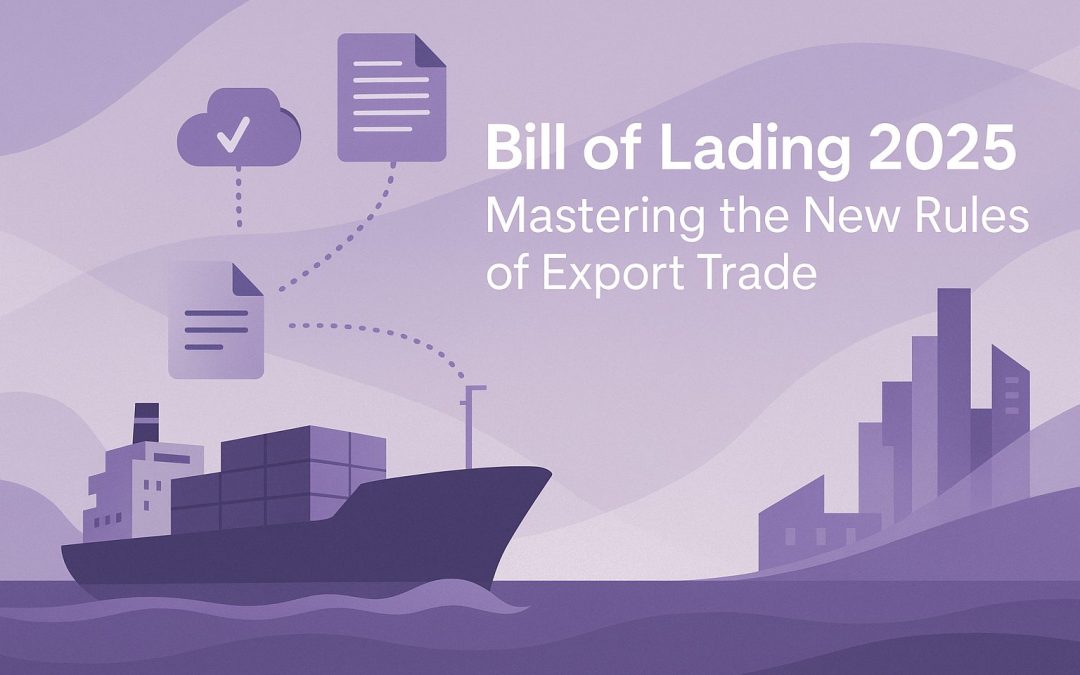

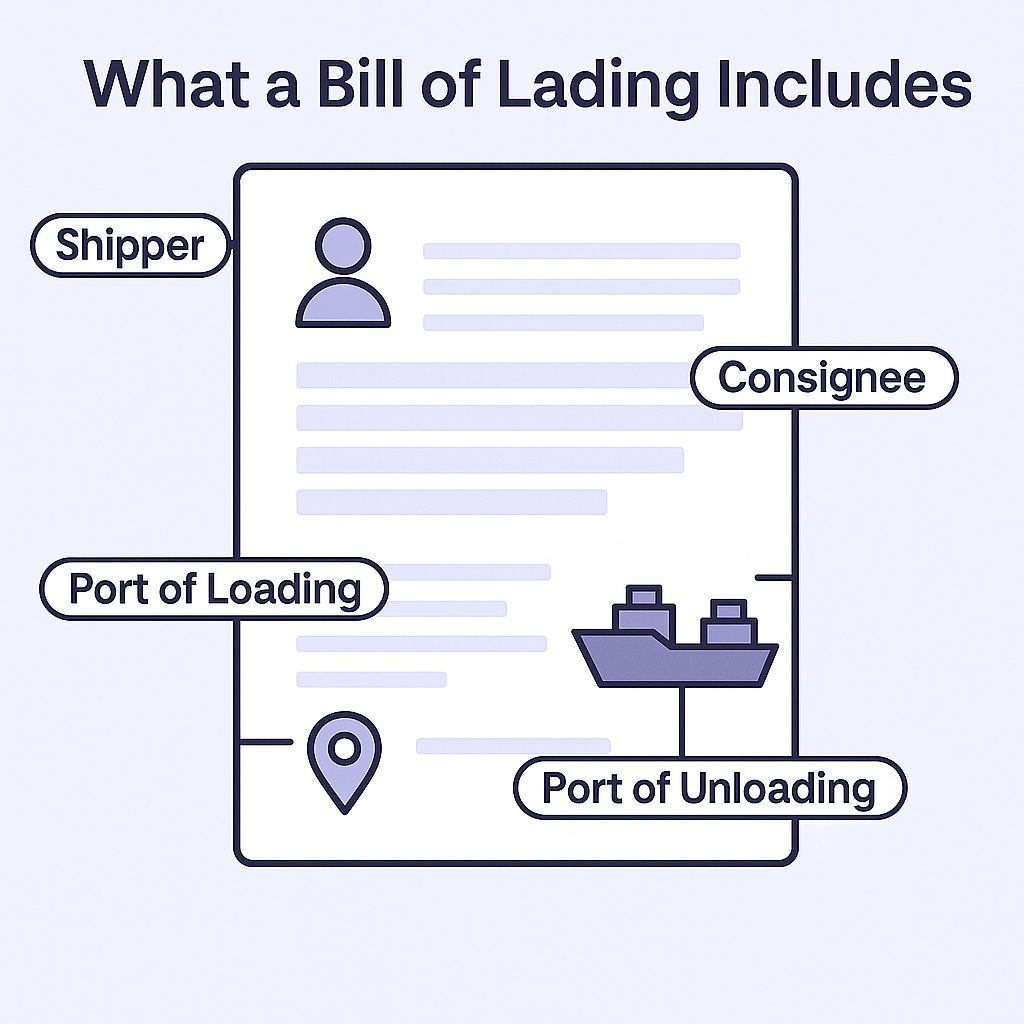
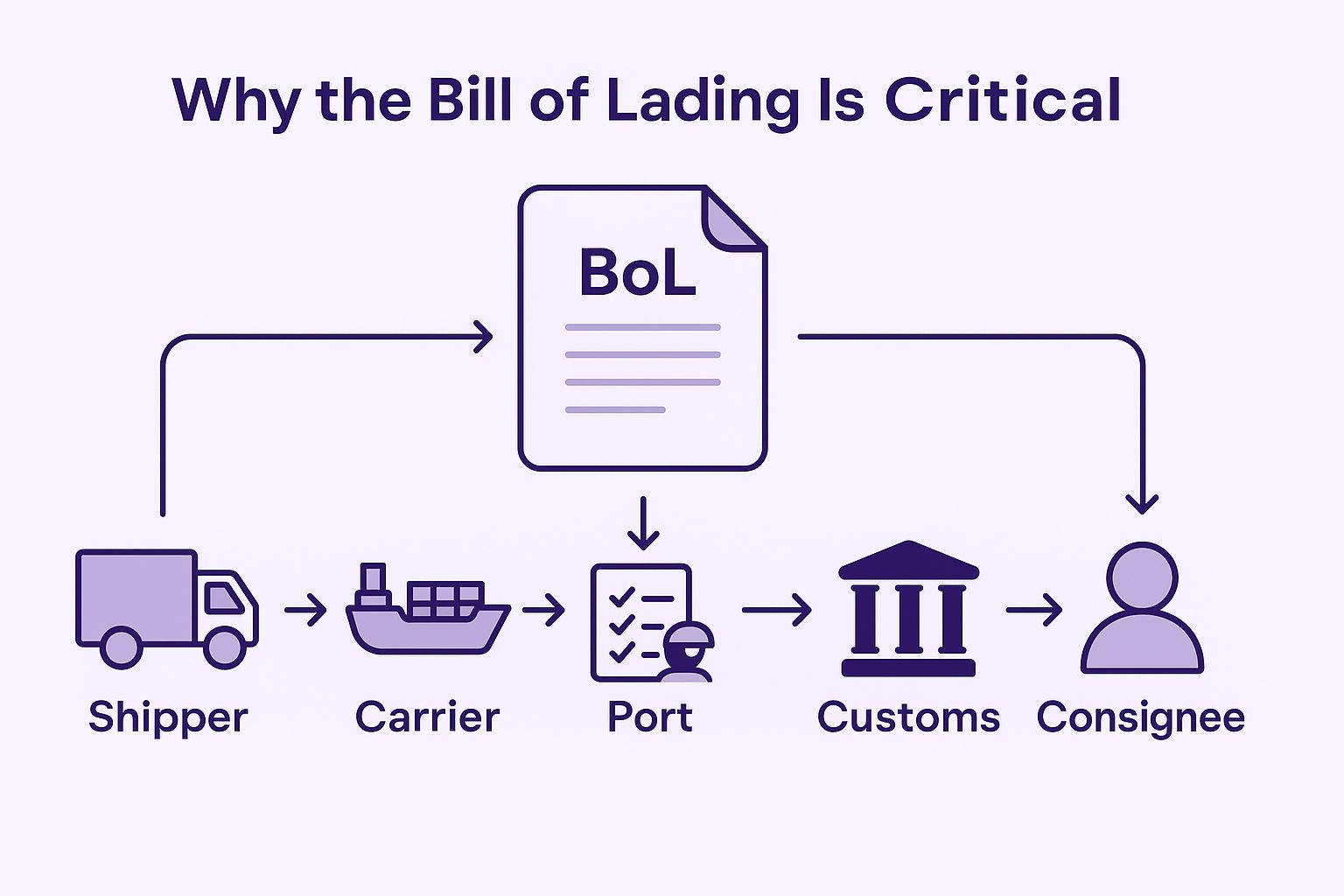
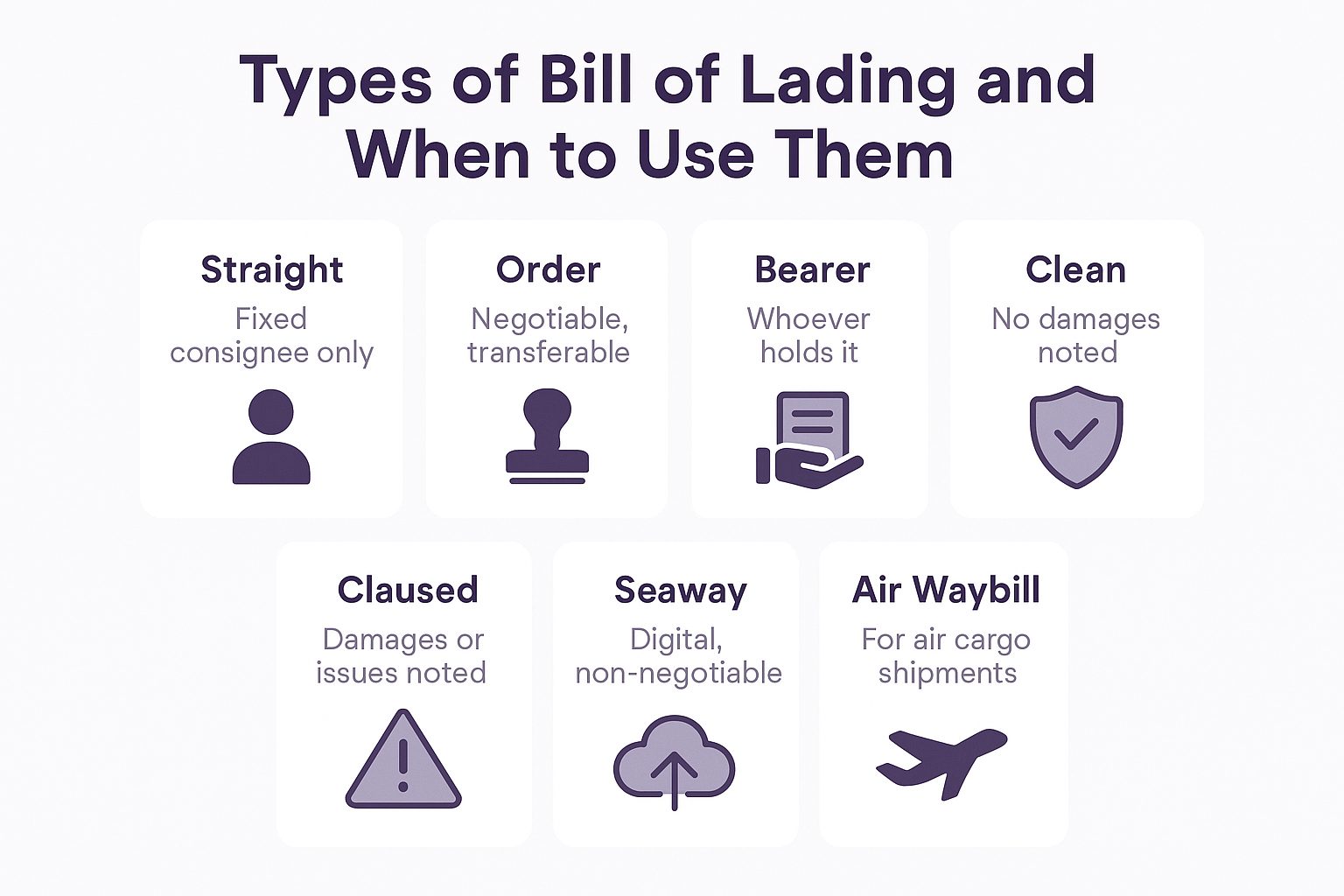

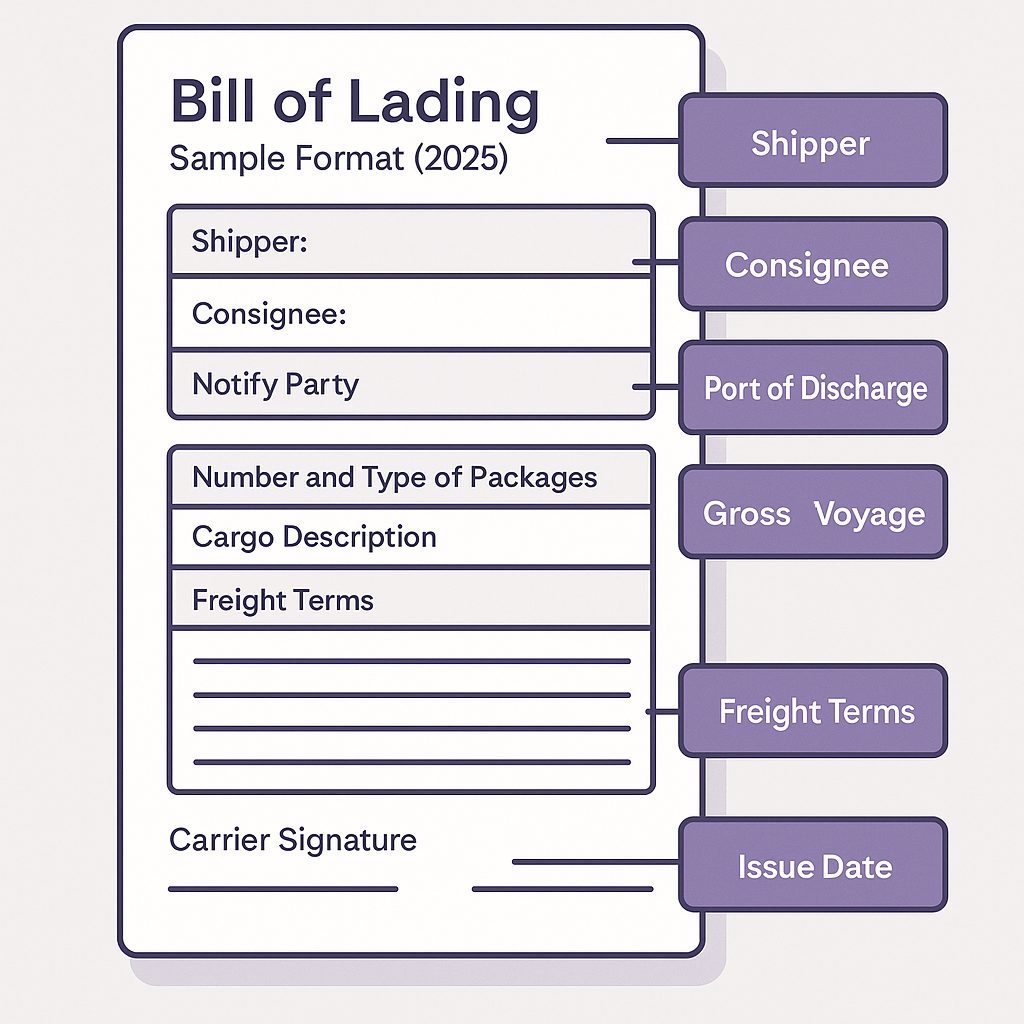
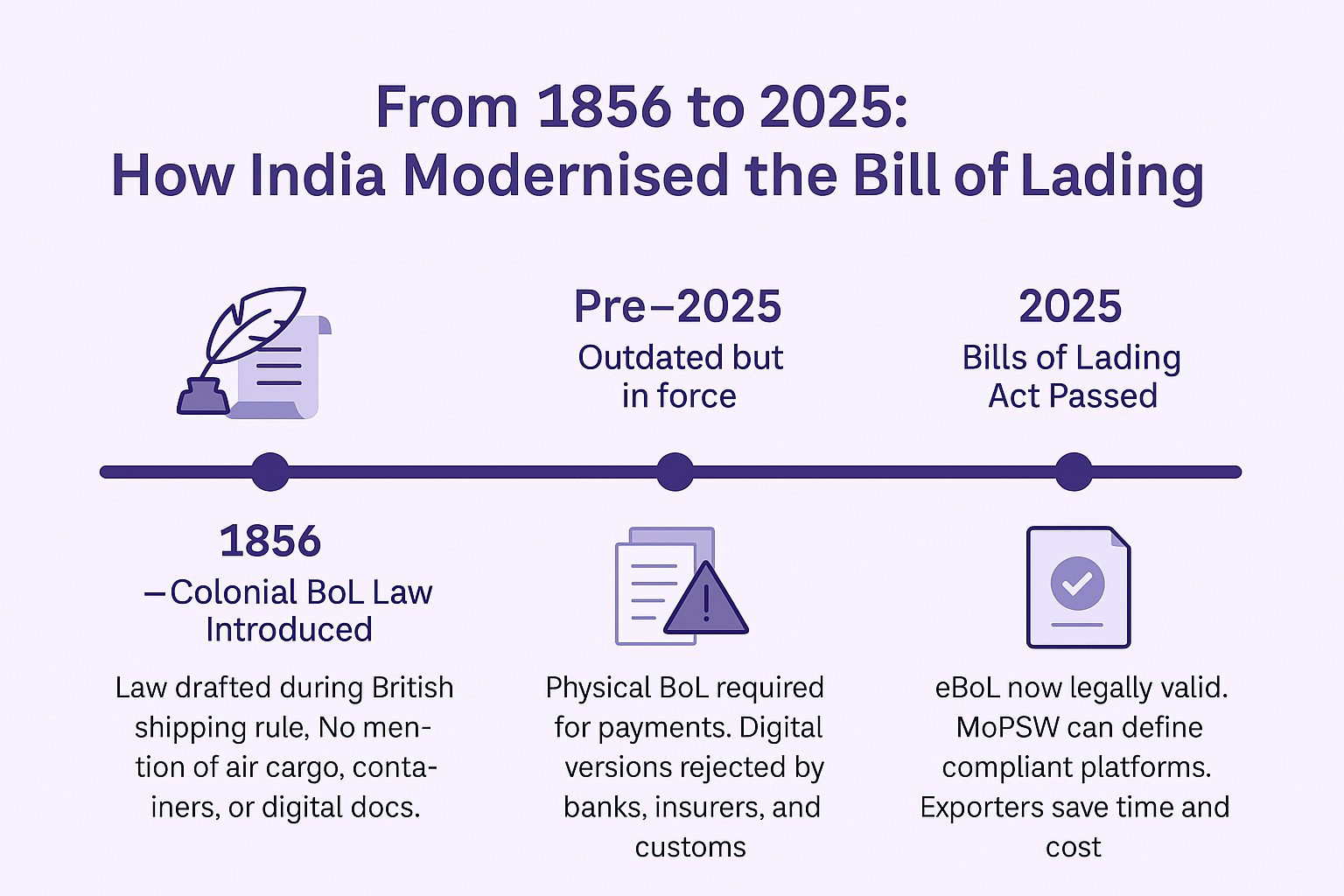

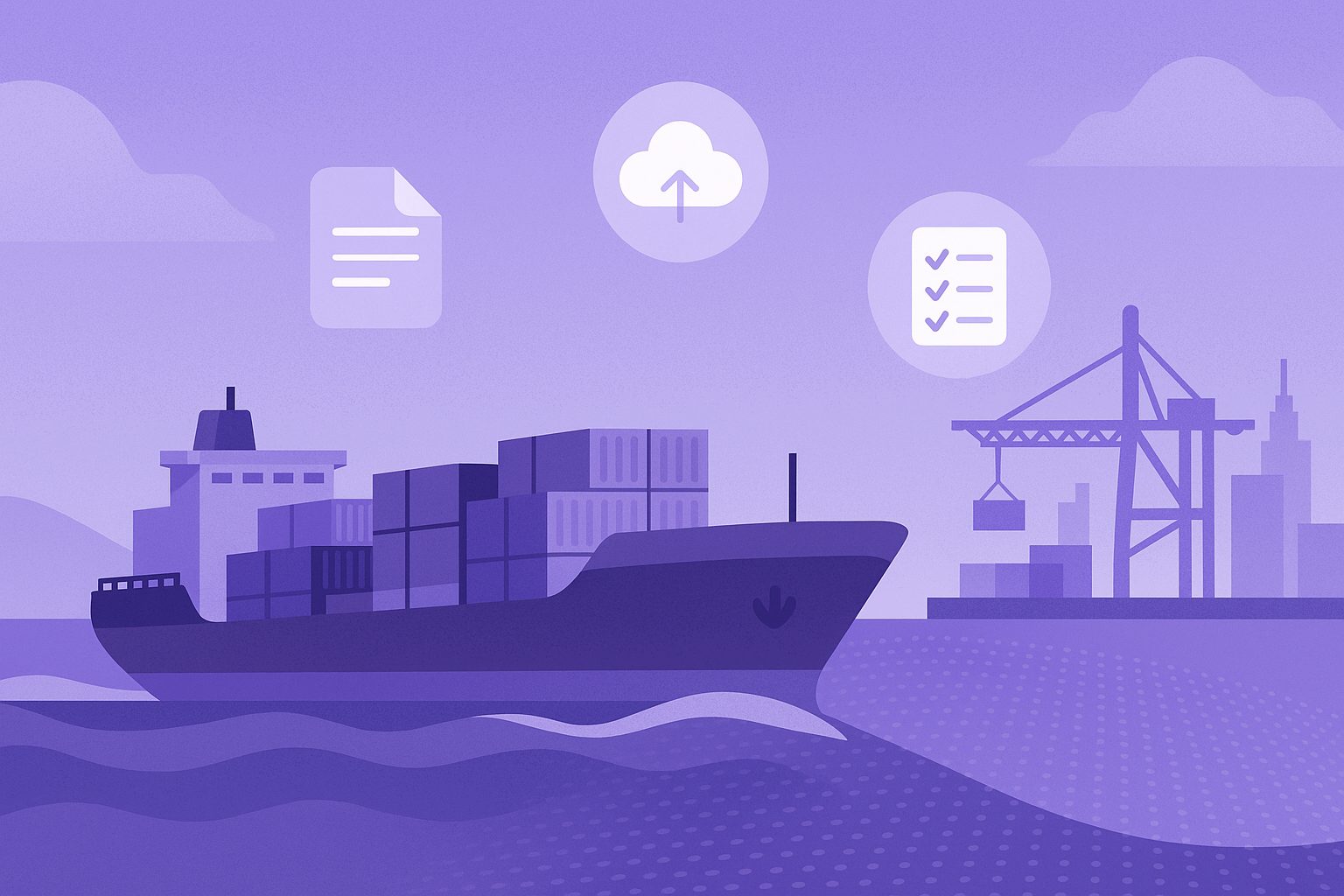

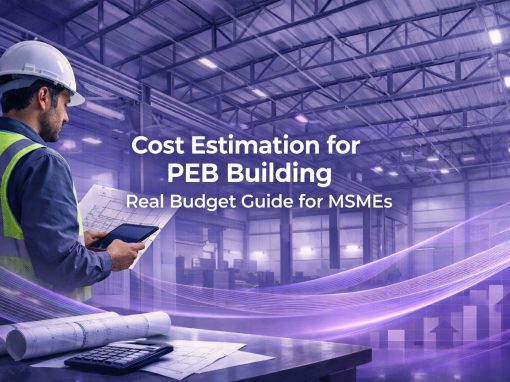


Interested for electronic Bill of Lading partnership?
We can provide you the solution happy to talk further.